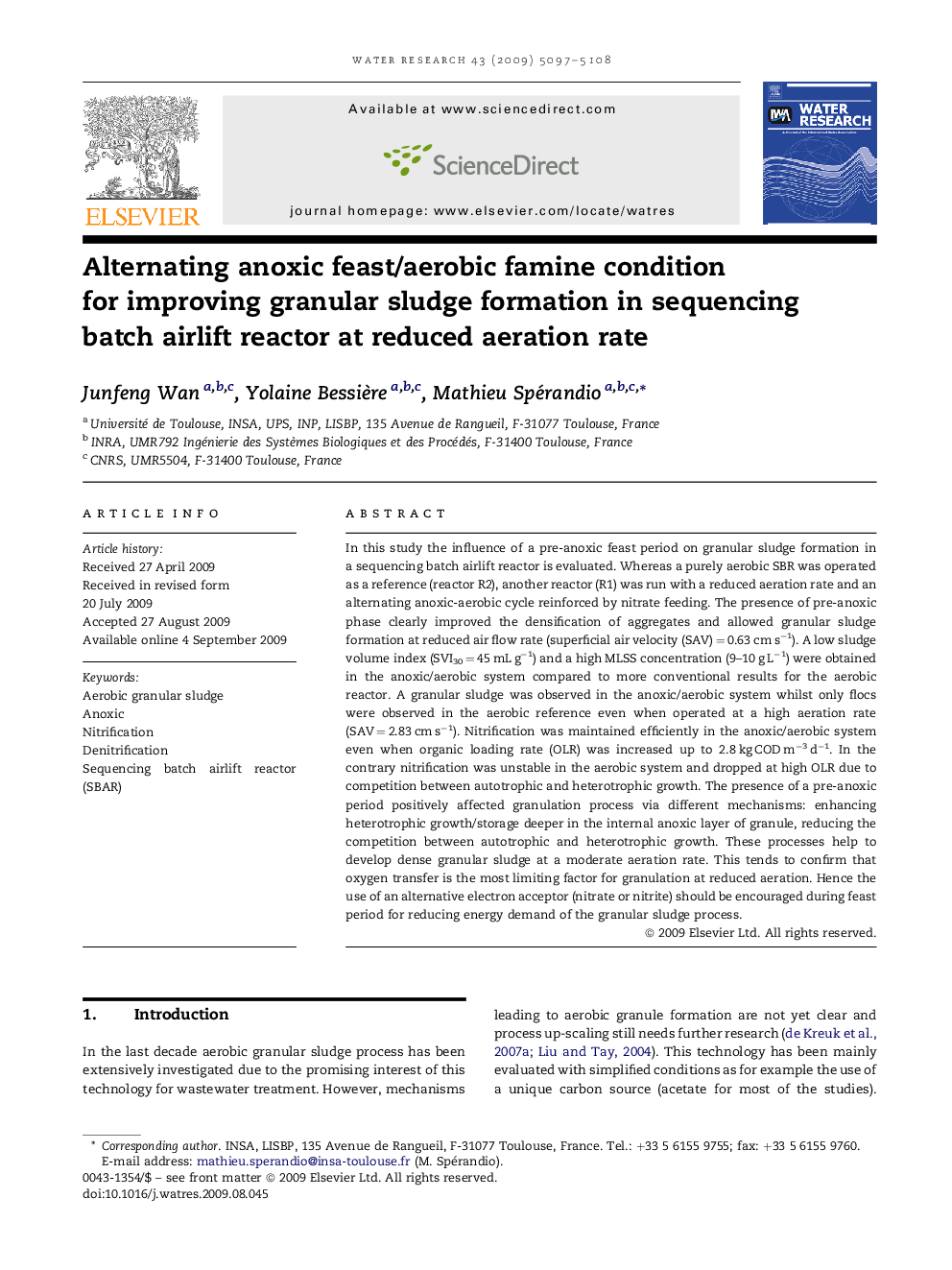| کد مقاله | کد نشریه | سال انتشار | مقاله انگلیسی | نسخه تمام متن |
|---|---|---|---|---|
| 4485374 | 1316950 | 2009 | 12 صفحه PDF | دانلود رایگان |

In this study the influence of a pre-anoxic feast period on granular sludge formation in a sequencing batch airlift reactor is evaluated. Whereas a purely aerobic SBR was operated as a reference (reactor R2), another reactor (R1) was run with a reduced aeration rate and an alternating anoxic-aerobic cycle reinforced by nitrate feeding. The presence of pre-anoxic phase clearly improved the densification of aggregates and allowed granular sludge formation at reduced air flow rate (superficial air velocity (SAV) = 0.63 cm s−1). A low sludge volume index (SVI30 = 45 mL g−1) and a high MLSS concentration (9–10 g L−1) were obtained in the anoxic/aerobic system compared to more conventional results for the aerobic reactor. A granular sludge was observed in the anoxic/aerobic system whilst only flocs were observed in the aerobic reference even when operated at a high aeration rate (SAV = 2.83 cm s−1). Nitrification was maintained efficiently in the anoxic/aerobic system even when organic loading rate (OLR) was increased up to 2.8 kg COD m−3 d−1. In the contrary nitrification was unstable in the aerobic system and dropped at high OLR due to competition between autotrophic and heterotrophic growth. The presence of a pre-anoxic period positively affected granulation process via different mechanisms: enhancing heterotrophic growth/storage deeper in the internal anoxic layer of granule, reducing the competition between autotrophic and heterotrophic growth. These processes help to develop dense granular sludge at a moderate aeration rate. This tends to confirm that oxygen transfer is the most limiting factor for granulation at reduced aeration. Hence the use of an alternative electron acceptor (nitrate or nitrite) should be encouraged during feast period for reducing energy demand of the granular sludge process.
Journal: Water Research - Volume 43, Issue 20, December 2009, Pages 5097–5108